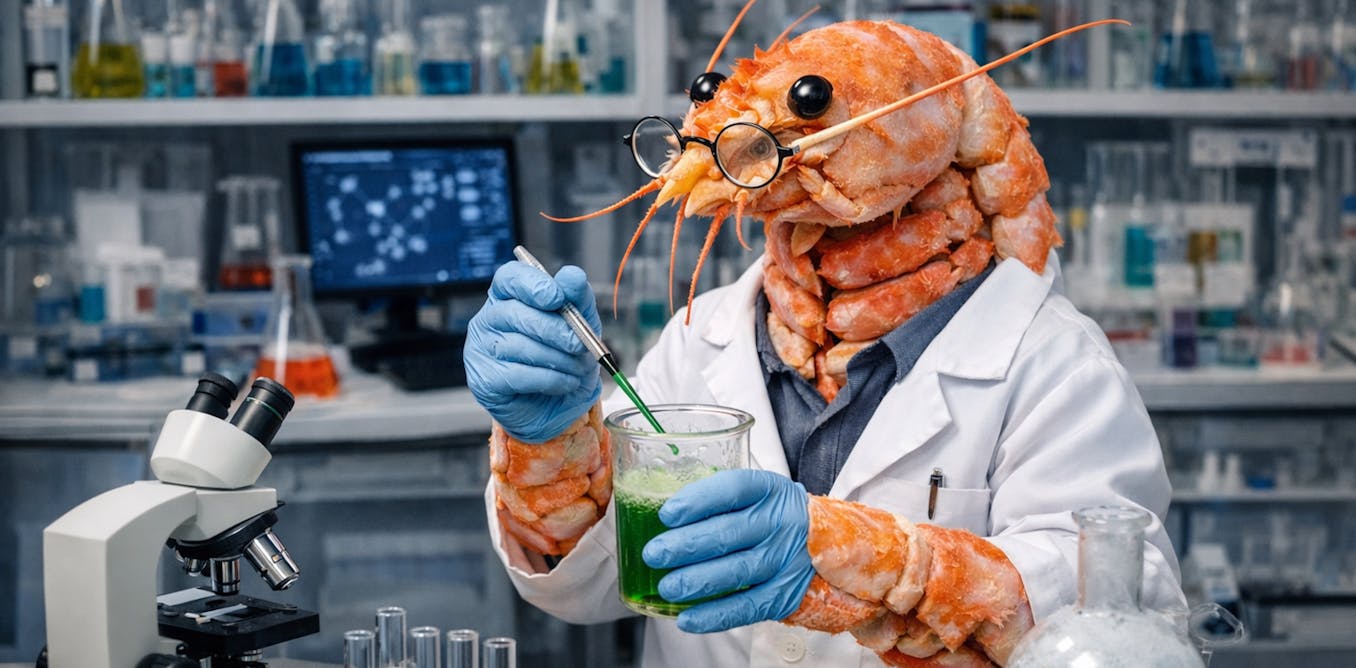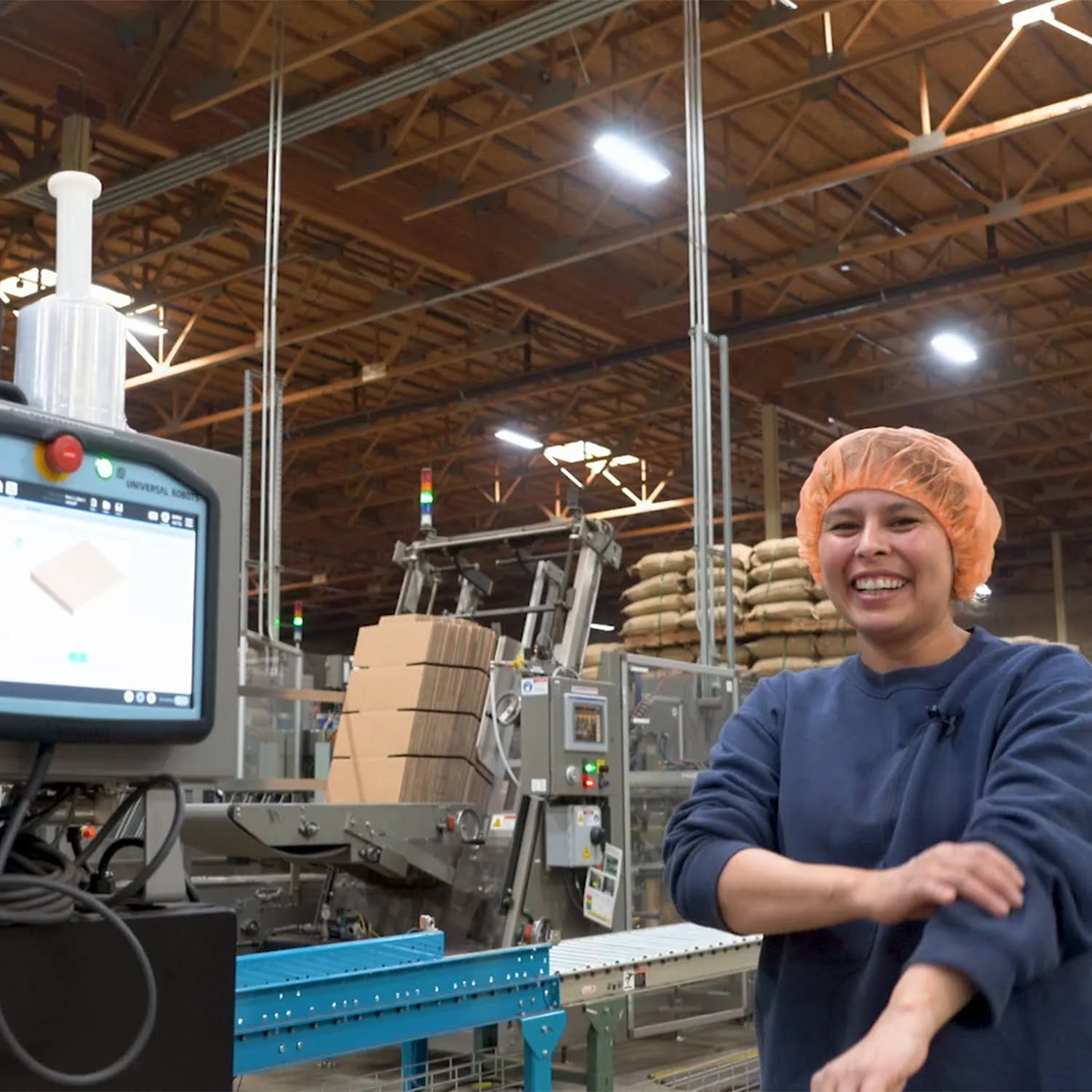Being long and skinny and wiggly is a strategy that’s been wildly successful for animals, ever since there have been animals, more or less. Roboticists, eternally jealous of biology, have taken notice of this, and have spent decades trying to build robotic versions of snakes, salamanders, worms, and more. There’s been some success, of a sort, although most of the robotic snakes and whatnot that we’ve seen have been for things like disaster relief, which is kind of just what you do when you have a robot with a novel movement strategy but without any other obvious practical application.
Dan Goldman at Georgia Tech has been working on bioinspired robotic locomotion for as long as anyone, and as it turns out, that’s exactly the amount of time that it takes to develop a long and skinny and wiggly robot with a viable commercial use case. Goldman has a new Atlanta-based startup called Ground Control Robotics (GCR) that’s bringing what are essentially giant robotic arthropods to agricultural crop management.
– YouTube
I’m not entirely sure what you’d call this—a robotic giant centipede might be the easiest description to agree on, I guess? But Goldman tells us that he doesn’t consider his robots to be bioinspired as much as they’re ‘robophysical’ models of living systems. “I like the idea of carefully studying the animals,” Goldman says. “We use the models to test biological principles, discover new phenomena with them, and then bring those insights into hardened robots which can go outside of the lab.”
Centipede Robots for Crop Management
The robot itself is not that complicated, at least on the scale of how complicated robots usually are. It’s made up of a head with some sensors in it plus a handful of identical cable-connected segments, each with a couple of motors for leg actuation. On paper, this works out to be a lot of degrees of freedom, but you can get surprisingly good performance using relatively simple control techniques.
“Centipede robots, like snake robots, are basically swimmers,” Goldman says. The key difference is that adding legs expands the different kinds of environments through which swimming robots can move. The right pattern of lifting and lowering the legs generates a fluid-like thrust force that helps the robot to push off more stuff as it moves to make its motion more consistent and reliable. “We created a new kind of mechanism to take actuation away from the centerline of the robot to the sides, using cables back and forth,” says Goldman. “When you tune things properly, the robot goes from being stiff to unidirectionally compliant. And if you do that, what you find is almost like magic—this thing swims through arbitrarily complex environments with no brain power.”
The complex environments that the robot is designed for are agricultural. Think sensing and weed control in fields, but don’t think about gentle rolling hills lined with neat rows of crops. That kind of farming is very amenable to automation at scale, and there are plenty of robotics companies in that space already. Not all plants grow in well-kept rows on mostly flat ground, however: Perennial crops, where the plant itself sticks around and you harvest stuff off of it every year, can be much more complicated to manage. This is especially true for crops like wine grapes, which can grow on very steep and often rocky slopes. Those kinds of environments are an opportunity for GCR’s robots, offering an initial use case that brings the robot from academic curiosity to something with unique commercial potential.

Wiggly antennae-like structures help the robot to climb over obstacles taller than itself.Ground Control Robotics
“Robotics researchers tend to treat robots as one-off demonstrations of a theory or principle,” Goldman says. “You get the darn thing to work, you submit it to [the International Conference on Robotics and Automation], and then you go onto the next thing. But we’ve had to build in robustness from the get-go, because our robots are experimental physics tools.” Much of the research that Goldman does in his lab is on using these robophysical models to try and systematically test and (hopefully) understand how animals move the way that they do. “And that’s where we started to see that we could have these robots not just be laboratory toys,” says Goldman, “but that they could become a minimum viable product.”
Automated Weed Control Solutions
According to GCR, there is currently no automated solution for weed control around scraggly bushy or vine-like plants (like blueberries or strawberries or grapes), and farmers can spend an enormous amount of money having humans crawl around under the plants to check health and pull weeds. GCR estimates that weed control for blueberries in California can run US $300 per acre or more, and strawberries are even worse, sometimes more than $1000 per acre. It’s not a fun job, and it’s getting increasingly difficult to find humans willing to do it. For farmers who don’t want to spray pesticides, there aren’t a lot of good options, and GCR thinks that its robotic centipedes could fill that niche.
An obvious question with any novel robotic mobility system is whether you could accomplish basically the same thing with a system that’s much less novel. Like, quadrupeds are getting pretty good these days, why not just use one of them? Or a wheeled robot, for that matter? “We want to send the robot as close to the crops as possible,” says Goldman. “And we don’t want a bigger, clunkier machine to destroy those fields.” This gets back to the clutter problem: A robot large enough to ignore clutter could cause damage, and most robots small enough not to damage clutter become a nightmare of a control problem.
When most of the obstacles that robots encounter are at a comparable scale to itself, control becomes very difficult. “The terrain reaction forces are almost impossible to predict,” explains Goldman, which means that the robot’s mobility regime gets dominated by environmental noise. One approach would be to try to model all of this noise and the resulting dynamics and implement some kind of control policy, but it turns out that there’s a much simpler strategy: more legs. “It’s possible to generate reliable motion without any sensing at all,” says Goldman, “if we have a lot of legs.”
For this design of robot, adding more legs is easy, which is another advantage of this type of mobility over something like a quadruped. Each of GCR’s robots will cost a lot less than you probably think—likely in the thousand dollar range, because the leg modules themselves are relatively cheap and most of the intelligence is mechanical rather than sense-based or compute-based. The concept is that a decentralized swarm of these robots would operate in fields 24/7—just scouting for now, where there’s still a substantial amount of value, and then eventually physically ripping out weeds with some big robotic centipede jaws (or maybe even lasers!) for a lower cost than any other option.

Eventually, these robots will operate autonomously in swarms, and could also be useful for applications like disaster response.Ground Control Robotics
Ground Control Robotics is currently working with a blueberry farmer and a vineyard owner in Georgia on pilot projects to refine the mobility and sensing capabilities of the robots within the next few months. Obviously, there are options to expand into disaster relief (for real) and perhaps even military applications, although Goldman tells us that different environments might require different limb configurations or the ability to tuck the limbs away entirely. I do appreciate that GCR is starting with an application that will likely take a lot more work, but also has a lot more potential. It’s not often that we get to see such a direct transition between novel robotics research and a commercial product, and while it’s certainly going to be a challenge, I’ve already put my backyard garden on the waiting list.

The post “Giant Robotic Bugs Are Headed to Farms” by Evan Ackerman was published on 05/16/2025 by spectrum.ieee.org






















